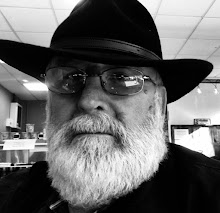2010 study by Roosevelt University researchers found the Chicago area had the most heroin-related hospital visits in the nation. The drug is cheap, and it's attracting users everywhere including some who are very young. Today's heroin can be snorted or smoked -- not just injected -- and that's led to a change in the typical user. Increasingly, today's addict is young, female and from the suburbs. And the roots of their addiction can be found in their family's medicine cabinet. For many, the road to dependence begins at independence --one of a handful of West Side exits off the Eisenhower serve as the gateway to the nation's busiest heroin corridor. "The ride there you're just anxiety, just, 'Oh I can't wait to get there. I can't wait to get it. I can't wait to feel better,'" said a 19-year-old female heroin addict whose scar are more than skin deep. She grew up far from the west side's rough and tumble streets, amidst the manicured lawns of the far west suburbs which seems an unlikely breeding ground for a new crop of heroin users. "I always thought of them as homeless and not caring about what they look like and real skinny and everything," the 19-year-old addict said. Heroin has never been cheaper and more pure. Just $100 can buy a two day supply. "I knew. The first time I did it I was like, 'This is bad. I like this way too much. And this is going to be bad," said the 19-year-old addict, whose identity ABC7 has hidden. DEA Agent Jack Riley says powerful Mexican drug cartels have partnered with Chicago street gangs to make heroin easily available. "If I had to liken anything to a weapon of mass destruction, it would be heroin," Riley said. After smuggling the drugs here, Riley says the cartels often operate in Spanish-speaking areas near Midway Airport. "They can assimilate into these hard working neighborhoods. They can appear to be great citizens, take care of their lawn, put Christmas lights up," Riley said. The cartels need the gangs to distribute the drugs but officials say fights between the two groups are increasingly to blame for the near-daily violence plaguing some neighborhoods. "What we consider to be senseless violent acts, many of them may be actually connected to the cartel's operations in Chicago," Riley said. It seems the danger is of little deterrent to users. "Within two weeks I was getting sick physically without it, and I needed it," the 19-year-old addict said. It wasn't until an overdose nearly killed her that she began treatment a few weeks ago at New Hope Recovery Center in Geneva. In four years, the facility has seen a seven-fold increase in heroin cases and many involve teens first hooked on prescription painkillers. "They'll run out, and someone will say 'Well, snort some heroin. It'll help you, so you won't go through withdrawals,'" said Jake Epperly, New Hope Recovery Center. That may have been how Billy Roberts began using. The Homer Glen 19-year-old died of an overdose two years ago and his father now warns of heroin's dangers. "I do it for him," said the victim's father John Roberts. "And I'll continue doing it as long as I'm alive. To give my son's life meaning. A former Chicago cop, Roberts says it's time for new solutions. "We need help. The police cannot do this alone. We need a comprehensive, strategic approach to this problem if we're ever going to see these numbers turn downward," Roberts said. To put in perspective how big the problem is here, the Chicago DEA has secured funding for a 90-person strike force to combat the operation run by the cartels and gangs in the city. Officials say it's the only such strike force outside of the U.S.-Mexico border. The 19-year-old woman interviewed by ABC7, who is currently in treatment, says she knows at least 20 other kids her age, from her community, who are current or former users.


Post a Comment
Post a Comment